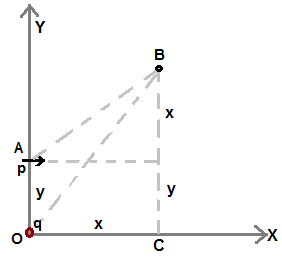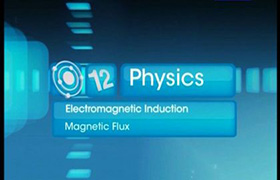JEE Class main Answered
Please solve the question

Asked by anshuman.anshuman090 | 19 Nov, 2019, 23:43: PM

Figure shows the position of dipole and charge as given in question.
Let us assume, at point B(x, x+y) electric field due to dipole and point charge vanishes.
Electric field at B due to dipole = ( k p 2cosθ ) / (AB)3 ...................(1)
where k is 1/(4πεo ) , εo is permitivitty of free space, p is dipole moment and θ is angle made by line AB
with direction of dipole vector
Electric field at B due to dipole = [ k p 2 (1/√2)] / 2√2 x3 = ( k p ) / (2x3 )...................(2)
Electric field at B due to point charge = -( k q ) / OB2 = ( k q ) / [ x2 + (x+y)2 ] ....................(3)
( since net field vanishes, point charge is taken as -ve )
If net field is zero, magnitude of both the fields should be same. By equating equations (2) and (3), we get
p / (2x3 ) = q / [ x2 + (x+y)2 ].................(4)
By substituting values for dipole moment p and magnitude of point charge q,
y-coordinate can be expressed in terms of x-coordinate using eqn.(4)
Answered by Thiyagarajan K | 21 Nov, 2019, 10:58: AM
Application Videos
Concept Videos
JEE main - Physics
Asked by sumalathamadarapu9 | 23 Oct, 2024, 22:06: PM
JEE main - Physics
Asked by py309649 | 13 Oct, 2024, 13:39: PM
JEE main - Physics
Asked by coolskrish | 13 Oct, 2024, 12:50: PM
JEE main - Physics
Asked by midnightmoon3355 | 09 Oct, 2024, 09:09: AM
JEE main - Physics
Asked by rambabunaidu4455 | 03 Oct, 2024, 16:03: PM
JEE main - Physics
Asked by ratchanavalli07 | 17 Sep, 2024, 07:46: AM
JEE main - Physics
Asked by yayashvadutta45 | 15 Sep, 2024, 19:47: PM
JEE main - Physics
Asked by adithireddy999 | 03 Sep, 2024, 09:35: AM
JEE main - Physics
Asked by vaishalinirmal739 | 29 Aug, 2024, 18:07: PM
JEE main - Physics
Asked by vradhysyam | 26 Aug, 2024, 17:17: PM










